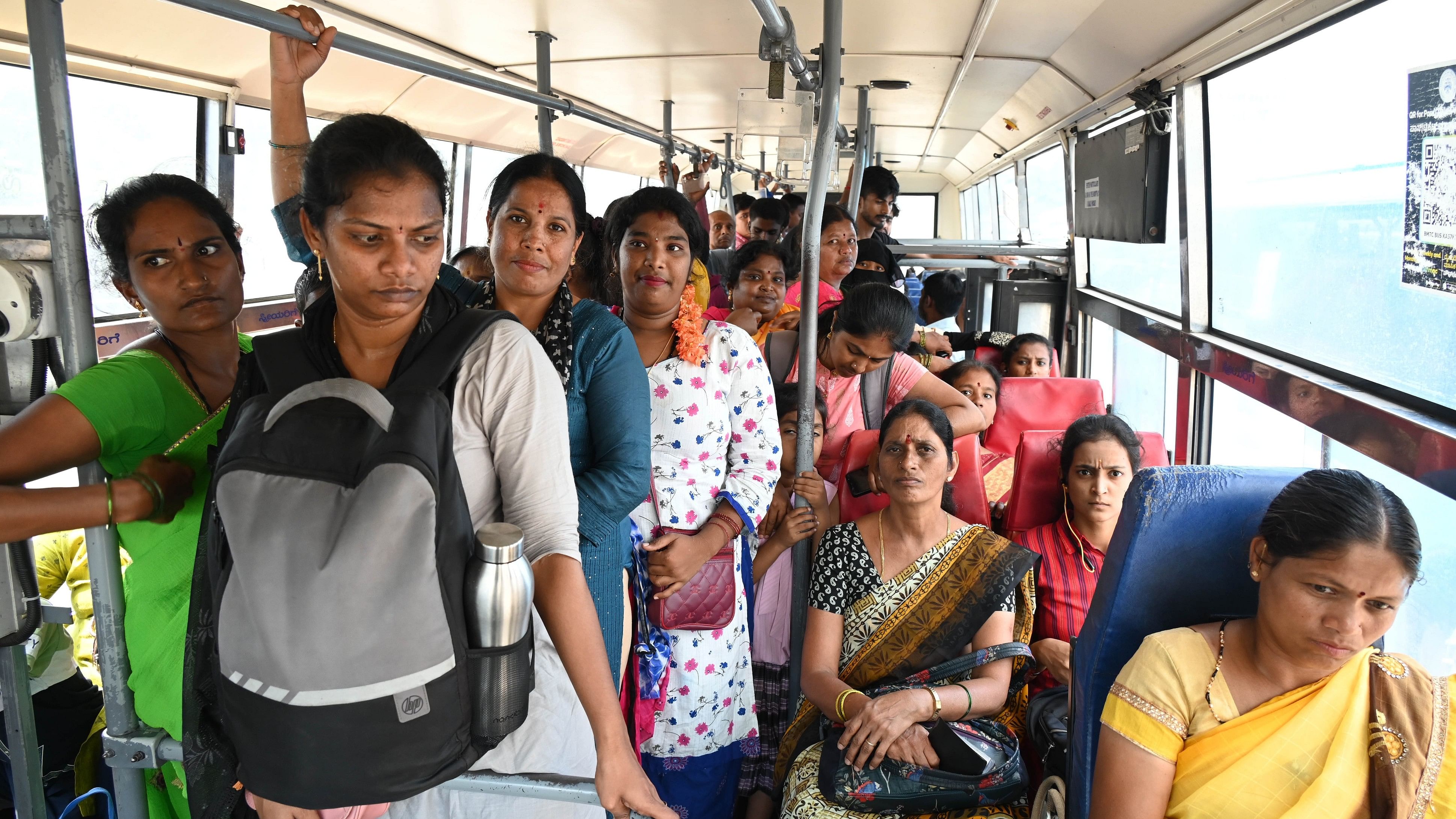
Marginalised communities chose buses because they are cheaper than the metro or private vehicles.
Credit: DH Photo
A recent report submitted to the Directorate of Urban Land Transport (DULT) has highlighted the need for a gender-inclusive, disability-friendly transport policy that is accommodative of different needs to encourage women to use public transport.
Presented on Monday at a dissemination workshop by Prof (Dr) Meghna Verma, Head of the Centre for Sustainability at Ramaiah Institute of Management, the report offers recommendations to DULT and stakeholders to accommodate and institutionalise women’s unique urban transport needs.
The DULT-funded study involved seven focused group discussions with women from a diverse set of backgrounds, including white-collar workers, marginalised groups, students, homemakers, entrepreneurs and women with disabilities (separate mobility and visually impaired groups). Each of these groups contained nine to 12 participants.
Discussions held between January and February 2022 covered general attitudes toward public transport, individual experiences, cost and safety factors, and mobility expectations. It offered insights into travel patterns and psycho-social factors that influenced the women to choose private transport over public modes. These insights were used in the design recommendations.
Across all groups, convenience, safety, time, cost, and comfort were critical factors influencing transportation choices. Almost all these groups pointed to the absence of these factors in public transport.
Unavailability, poor reliability, and safety concerns about public transport compelled homemakers and women with disabilities to sacrifice time and well being to access it. As a result, they were forced to walk (mostly the case with homemakers) or engage personal vehicles like three-wheeled scooters. High-traffic density also triggered fear and safety concerns among these groups.
For entrepreneurs, white-collar women, working women with disabilities and students, personal vehicles were preferred for last-mile connectivity, even though public transport was considered safe.
Marginalised communities chose buses because they are cheaper than the metro or private vehicles.
Some of the recommendations
* Continuous, unobstructed footpaths with adequate street lighting
* Footpaths with ramps, tactile paths, sound-based signals at intersections
* Cycling paths
* Clean, disabled-friendly public toilets
* More signages in metro stations, buses and bus stands
* Improved first- and last-mile connectivity
* Higher frequency of BMTC buses with better connectivity
* Bus stops with comfortable seating
* Reduced metro fares
* Concession in metro fares for women with disabilities
* Designated parking for three-wheelers scooters
* Regulation of autos charging surge pricing